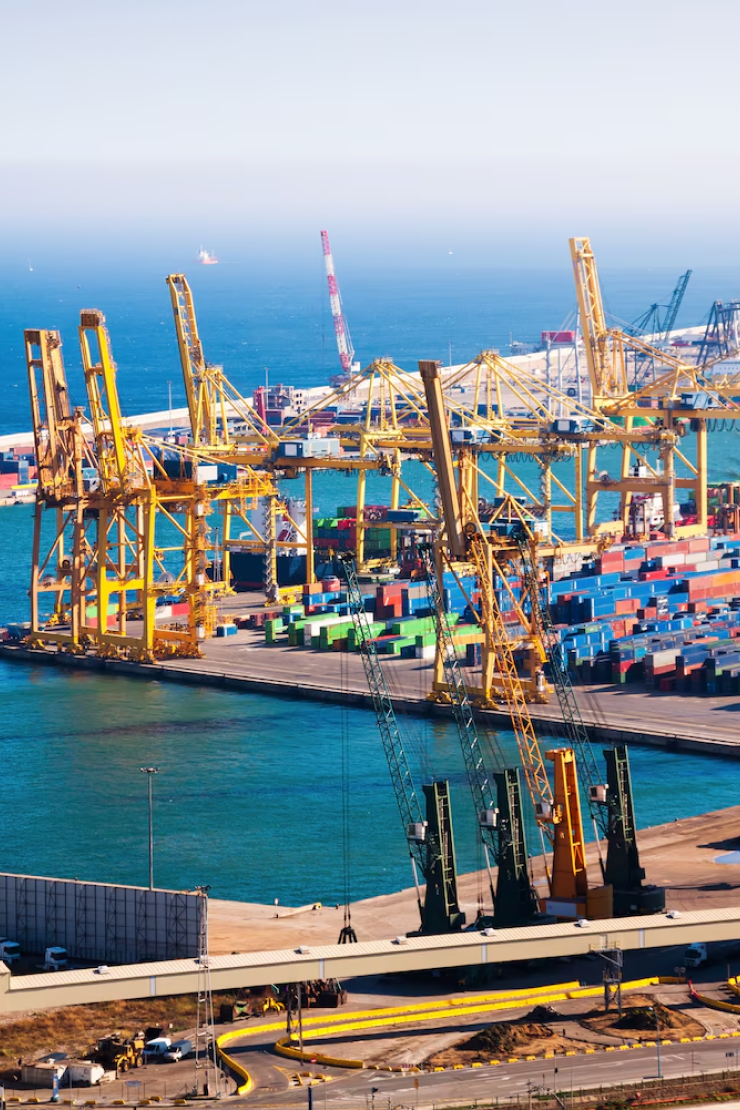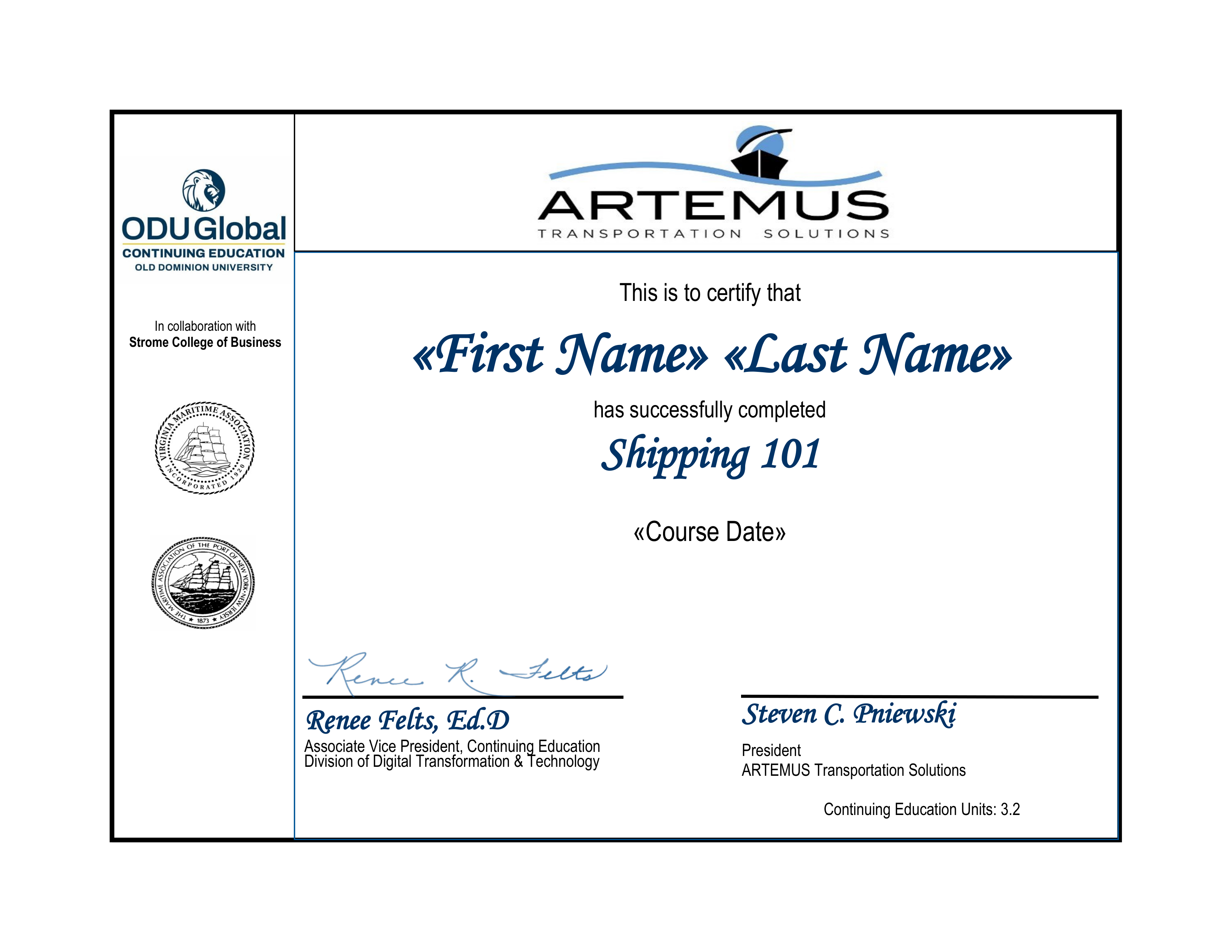Course Overview
Explore the essential geographical factors impacting international shipping, from continents & major ports to key import & export regions.
- Overview Of Global Continents
- Major International Shipping Ports
- Key Import & Export Regions
What You Will Learn?
Dive into the geographical aspects that shape international shipping, from understanding global continents to the strategic significance of major ports and key trade regions. This course will uncover how geographic factors impact global trade and logistics.
Overview Of Global Continents
Explore the geographical distribution of the world's continents and how their distinct characteristics and locations shape international shipping routes, logistical challenges, and trade flows.
Major International Shipping Ports
Discover the most significant shipping ports around the world, examining their strategic importance, infrastructure, and the vital role they play in facilitating global trade and commerce.
Key Import & Export Regions
Learn about the primary regions that dominate global imports and exports, understanding their economic significance and how they influence the dynamics of international trade.
By Artemus Transportation Solutions
With a dedicated legacy since 2004, Artemus Transportation Solutions has become a trusted leader in transportation compliance solutions, offering cutting-edge ISF, AMS, Customs Broker, & eManifest Canada & Japan AFR software. Our years of hands-on industry experience allow us to deliver impactful training courses that go beyond theory, empowering professionals with real-world knowledge.
- 19+ Years of Expertise in Global Transportation Compliance Solutions.
- Practical, real-world insights into Customs, Import, and Export processes.
- Hands-on training in managing complex transportation equipment logistics.
- Efficient solutions for navigating International Shipping and related challenges.

Recognized Certification From Artemus Transportation Solutions
Upon completing the International Shipping course, you'll receive a Certificate of Completion from Artemus Transportation Solutions. This certification highlights your expertise in global shipping processes & compliance, making it a valuable addition to your skills.

Our Reviews
Frequently Asked Questions
Who Is The Course Designed For?
This course is tailored for professionals at all levels, from beginner to intermediate learners, who are looking to enhance their knowledge of global shipping, logistics, & compliance.
What Topics Are Covered In The Geography Course?
The Geography course explores essential geographical factors that impact international shipping, including an overview of global continents, major international shipping ports, and key import and export regions around the world.
How Are Key Import And Export Regions Covered In The Course?
The course covers the major import and export regions of the world, including Asia, Europe, North America, and emerging markets. You’ll learn about the trade patterns, key commodities, and the logistics of moving goods between these regions.
Will I Receive A Certification Upon Course Completion?
Yes, you’ll receive a Certificate of Completion from Artemus Transportation Solutions, which can be showcased on your professional profiles.
Are The Courses Self-Paced Or Instructor-Led?
This course offers a flexible, self-paced learning format with video pre-recorded lessons, allowing you to complete them at your convenience. This approach enables you to learn at your own pace & revisit material as needed.
Do I Need Prior Experience In Shipping Or Logistics To Take This Course?
While prior experience is helpful, our beginner & intermediate-level courses provide foundational knowledge, making them accessible even for those new to the industry.
How Can This Course Benefit My Career?
By completing this course, you’ll gain practical, real-world insights that can boost your skills, enhance your compliance knowledge, & advance your career in the shipping & logistics industry.
What Makes Artemus's Geography Course Unique Compared To Other Similar Courses?
Artemus’s Geography course provides a focused, detailed exploration of the geographical elements that directly affect international shipping. It combines critical theoretical concepts with practical insights, offering learners a deep understanding of how continents, ports, and trade regions shape global shipping dynamics.
Geography Course: Learn topics relevant to global trade routes, port locations, and more
Overview of shipping ports around the world and their importance
Shipping ports are vital hubs for international trade, facilitating the movement of goods across continents. These ports serve as gateways for imports and exports, connecting industries to global markets. Efficient port operations enhance economic growth, streamline logistics, and reduce transportation costs. Major ports like Shanghai, Singapore, and Rotterdam handle millions of containers annually. Their strategic location and infrastructure determine their impact on global trade.
Major shipping ports and global trade routes
Global trade routes are shaped by the locations of major shipping ports, influencing international commerce and supply chains. Key maritime routes include the Panama Canal, Suez Canal, and the Strait of Malacca, which connect major economies. Ports such as Los Angeles, Hong Kong, and Dubai are crucial transit points for cargo. These ports streamline distribution networks and optimize shipping efficiency. Understanding trade routes helps businesses plan effective logistics strategies.
Largest shipping ports in the US and their economic impact
The United States is home to some of the largest shipping ports that drive economic growth and job creation. Ports like the Port of Los Angeles, Port of Long Beach, and Port of New York & New Jersey handle significant cargo volumes. These ports support manufacturing, retail, and agriculture by enabling efficient import and export processes. The economic impact extends to logistics, transportation, and supply chain industries. Their efficiency is crucial to maintaining global trade competitiveness.
Busiest shipping ports in the US for cargo movement
The busiest shipping ports in the US process millions of containers annually, serving as critical links in the global supply chain. The Port of Los Angeles is the busiest, followed by the Port of Long Beach and the Port of Savannah. These ports handle large volumes of consumer goods, automobiles, and agricultural products. Advanced infrastructure and technology help them manage cargo flow efficiently. Their performance directly affects shipping costs and delivery timelines.
Largest shipping ports in the world and trade volume
The largest shipping ports globally handle immense trade volumes, driving international commerce. The Port of Shanghai ranks as the world’s largest, processing over 40 million TEUs (twenty-foot equivalent units) annually. Other major ports include Singapore, Rotterdam, and Dubai, serving as vital global trade hubs. These ports support vast industrial and consumer markets, ensuring seamless global supply chain operations. Efficient port management reduces delays and enhances international trade efficiency.
Biggest shipping ports in the US for international trade
The biggest US ports play a key role in international trade, handling diverse cargo types. The Port of Houston is a leader in energy exports, while the Port of New York & New Jersey facilitates trade with Europe. The Port of Los Angeles and Port of Long Beach dominate trans-Pacific trade. These ports invest in modern technology to handle growing shipping demands. Their global connectivity strengthens the US economy and supply chain resilience.
Busiest shipping ports in the world and their operations
The world’s busiest ports process millions of containers and bulk cargo shipments annually. The Port of Shanghai, Singapore, and Shenzhen lead in container traffic and trade volume. Efficient port operations rely on automation, digital logistics, and high-capacity terminals. These ports handle goods ranging from electronics to raw materials, connecting major global economies. Their operational efficiency determines shipping costs and supply chain reliability.
How many shipping ports are in the US and where they are located?
The United States has over 360 commercial ports, with key locations along the Atlantic, Pacific, and Gulf Coasts. Major ports are found in states like California, Texas, Florida, and New York. The Port of Los Angeles and Port of Long Beach lead on the West Coast, while the Port of New York & New Jersey dominates the East Coast. Gulf Coast ports, such as Houston and New Orleans, are crucial for energy exports. These ports support global trade by handling containerized, bulk, and liquid cargo.
Understanding continents and their role in global trade
Continents are the foundation of global trade, each contributing unique resources and industries. Asia dominates manufacturing and exports, while North America leads in technological and agricultural goods. Europe is a key financial hub, and Africa holds vast natural resources. South America is known for agricultural exports, while Australia is rich in minerals. Antarctica, though uninhabited for trade, plays a role in scientific research.
What are the 7 continents and their unique features?
The seven continents—Asia, Africa, North America, South America, Antarctica, Europe, and Australia—differ in geography, population, and trade contributions. Asia is the largest and most populous, driving global manufacturing. Africa is resource-rich, supplying minerals and oil. North America leads in agriculture and technology, while South America is known for coffee and beef exports. Europe excels in finance and luxury goods. Australia exports minerals, and Antarctica is mostly ice-covered with limited human activity.
What are all the continents and their key characteristics?
Each continent has distinct characteristics influencing global trade and economy. Asia leads in production and exports, while Africa is rich in untapped natural resources. North America excels in technological innovations and exports agricultural products. South America is a key player in mining and food exports. Europe is a center for banking, luxury goods, and automotive industries. Australia is a leader in mineral and energy exports. Antarctica, while not an economic hub, is vital for climate research.
Global export leaders and their trade influence
Countries leading in exports shape international trade patterns and economic relationships. China dominates in electronics and machinery, while the US is a major agricultural and technology exporter. Germany excels in automobiles and industrial equipment. Oil-exporting nations like Saudi Arabia and Russia influence global energy markets. Export leaders strengthen economies by fostering trade agreements and supply chain networks. Their policies impact global commerce and pricing trends.
What country exports the most oil and why?
Saudi Arabia is the world’s largest oil exporter due to its vast reserves and production capacity. The country benefits from low extraction costs and high global demand. It plays a crucial role in stabilizing global oil prices through OPEC. Other major oil exporters include Russia, Iraq, and the United States. The oil industry significantly contributes to national economies and energy security worldwide.
What country exports the most petroleum products?
The United States is the leading exporter of refined petroleum products, including gasoline and diesel. Its advanced refining infrastructure enables large-scale production and exports. Saudi Arabia, Russia, and India also export significant petroleum volumes. Refining capacity and crude oil availability determine export capabilities. Petroleum exports influence global energy prices and trade balances.
Which country exports the most oil and energy?
Saudi Arabia leads in crude oil exports, while Russia and the US also contribute significantly. The US exports large volumes of natural gas, especially LNG. Canada plays a key role in North American energy exports. Energy-exporting countries influence global markets through production and pricing strategies. Their exports ensure a stable supply to energy-dependent nations.
Which country is the largest exporter of oil today?
Saudi Arabia remains the largest crude oil exporter, supplying markets across Asia, Europe, and North America. Its production capacity and OPEC policies affect global prices. Russia and the US also rank among top oil exporters. The shift to renewable energy may impact oil trade in the future.
What country exports the most food to the world?
The United States is the top food exporter, supplying grains, meat, and processed foods. Brazil leads in soybeans and beef exports, while China exports seafood and vegetables. The Netherlands is a major exporter of dairy and agricultural products. Food exports depend on climate, technology, and global demand.
What country exports the most beer and alcohol?
Mexico is the largest beer exporter, with brands like Corona and Modelo. Germany and Belgium are renowned for high-quality beer exports. The US and the UK lead in whiskey and spirits exports. Alcohol trade is driven by cultural preferences and international demand.
What country exports the most steel for manufacturing?
China is the world’s largest steel exporter, supplying construction and manufacturing industries. Other major steel exporters include Japan, South Korea, and Germany. Steel exports drive industrial growth and infrastructure development globally.
Energy trade: imports vs. exports by country explained
Energy trade varies by country, with some nations being net exporters while others depend on imports. The US exports natural gas but imports crude oil. Saudi Arabia and Russia are major energy exporters. Energy trade influences global markets and geopolitical relations.
Does the country import or export energy resources?
A country’s energy trade status depends on its resource availability and consumption needs. The US exports natural gas but imports oil. Japan relies heavily on energy imports. Energy policies impact national economies and trade relations.
What do many middle eastern countries import the most?
Despite being oil-rich, Middle Eastern countries import food, machinery, and consumer goods. Limited agricultural production drives food imports. High demand for technology and luxury items also influences trade.
FAQs
-
What is the busiest shipping port in the world?
The Port of Shanghai in China is the busiest shipping port, handling over 40 million TEUs (twenty-foot equivalent units) annually. It is a crucial hub for global trade, especially in the Asia-Pacific region.
-
How many shipping ports are there in the US?
The United States has over 360 commercial ports, located along the Atlantic, Pacific, and Gulf Coasts. Major ports include the Port of Los Angeles, Port of New York & New Jersey, and Port of Houston.
-
What are the largest shipping ports in the US?
The largest ports in the US by cargo volume include the Port of Los Angeles, Port of Long Beach, and Port of Houston. These ports handle millions of containers and play a key role in global supply chains.
-
What are the main global trade routes?
The Suez Canal, Panama Canal, and Strait of Malacca are among the most important global trade routes. They connect major economies and significantly reduce shipping times for international trade.
-
What role do shipping ports play in global trade?
Shipping ports act as transit hubs for goods, enabling the movement of cargo between countries. They facilitate trade, support economies, and improve supply chain efficiency.
-
How do continents contribute to global trade?
Each continent has unique trade strengths:
- Asia dominates manufacturing and exports.
- North America leads in technology and agriculture.
- Europe specializes in finance and automotive industries.
- South America exports agricultural products.
- Africa is rich in natural resources.
- Australia exports minerals and energy.
-
What are the 7 continents and their key industries?
The seven continents are:
- Asia – Manufacturing and electronics.
- Europe – Finance, automobiles, and luxury goods.
- North America – Technology, agriculture, and oil.
- South America – Mining, agriculture, and coffee.
- Africa – Natural resources and minerals.
- Australia – Energy exports and minerals.
- Antarctica – Scientific research (no major industries).
-
Which country exports the most oil?
Saudi Arabia is the world’s largest oil exporter due to its vast reserves and production capacity. It plays a crucial role in OPEC and global energy markets.
-
Which country exports the most petroleum products?
The United States is the top exporter of refined petroleum products, including gasoline and diesel. It has advanced refining infrastructure that supports large-scale production.
-
What country exports the most food?
The United States leads in food exports, supplying grains, meat, and processed foods. Brazil and China are also major exporters of agricultural products.
-
Which country exports the most beer and alcohol?
Mexico is the largest beer exporter, with brands like Corona and Modelo being popular worldwide. Germany and Belgium also export significant amounts of beer.
-
Which country exports the most steel?
China is the world’s leading steel exporter, supplying industries worldwide. Other major exporters include Japan, South Korea, and Germany.
-
Does the US import or export more energy?
The United States is a net energy exporter, exporting natural gas and refined petroleum products while still importing some crude oil.
-
What do Middle Eastern countries import the most?
Middle Eastern nations primarily import food, machinery, and consumer goods due to limited agricultural production and growing demand for advanced technology.
-
What country imports the most energy?
Japan is one of the largest energy importers due to its limited natural resources. It relies on oil, natural gas, and coal imports for its energy needs.














